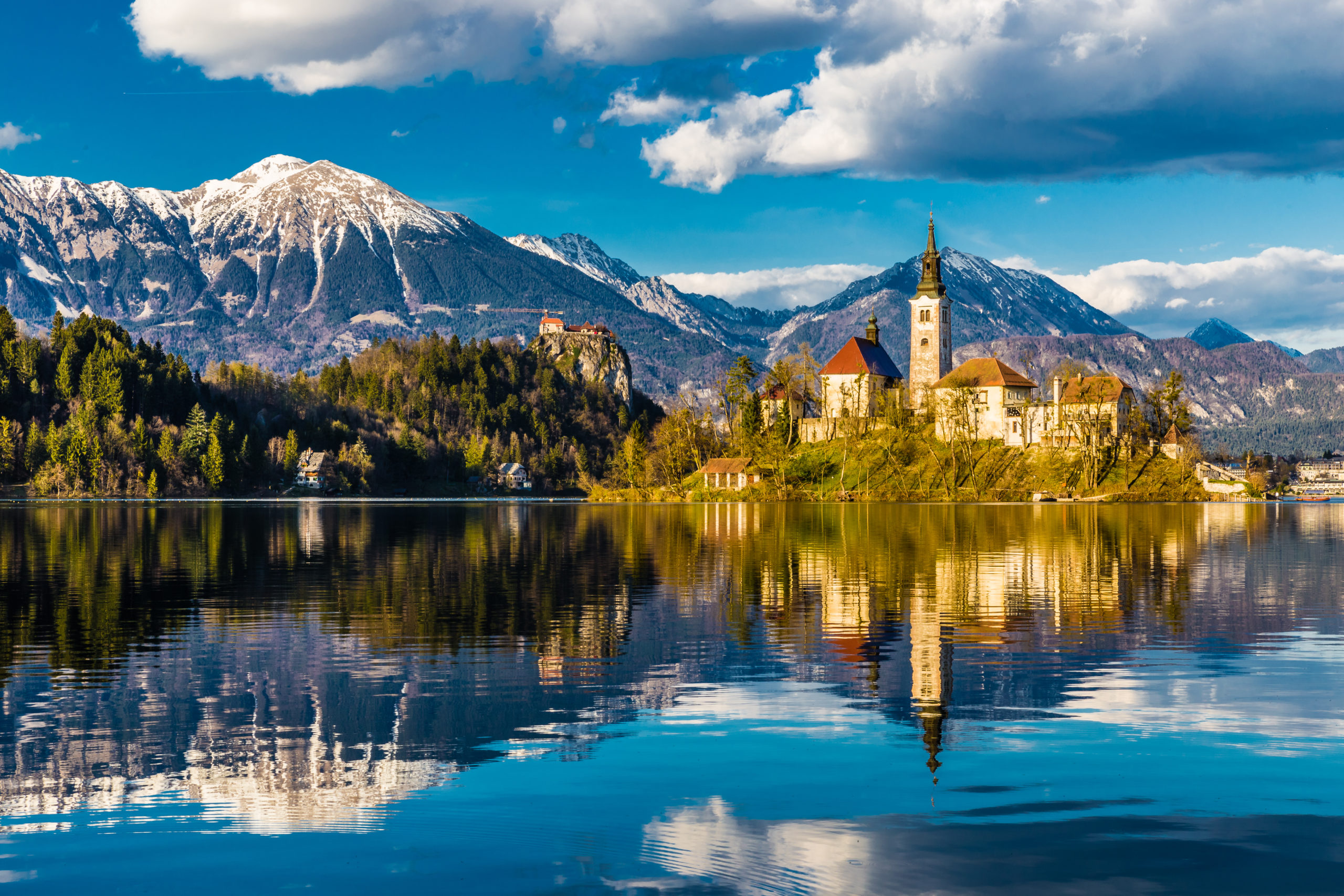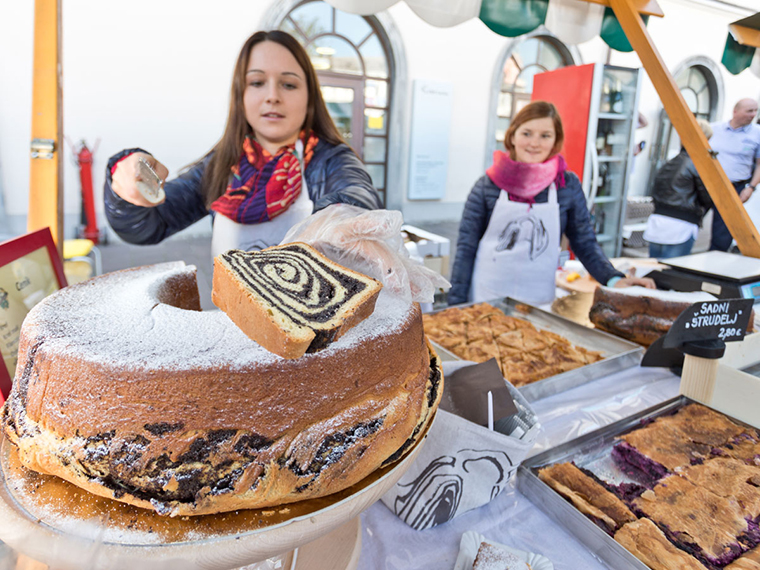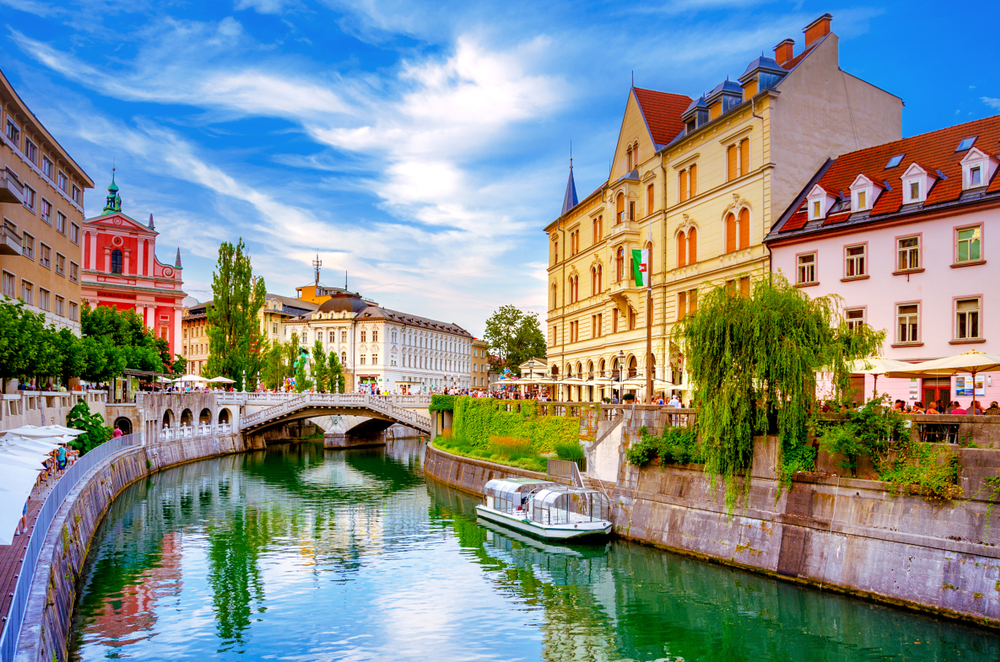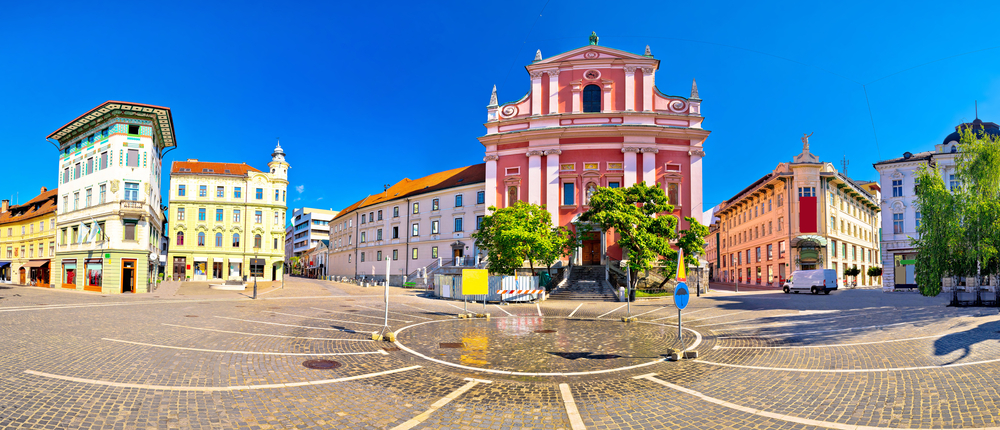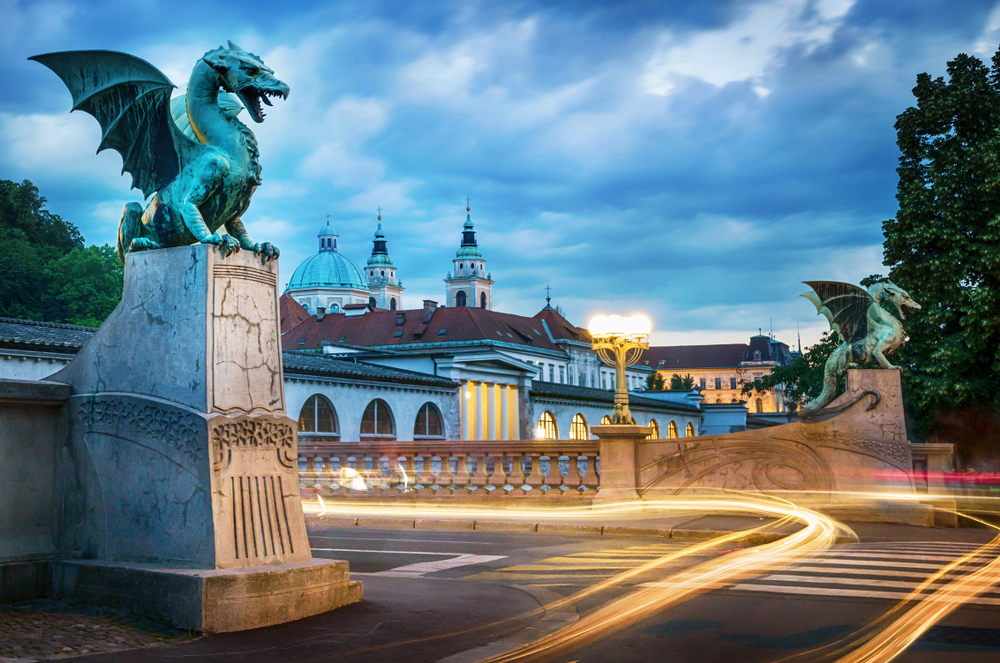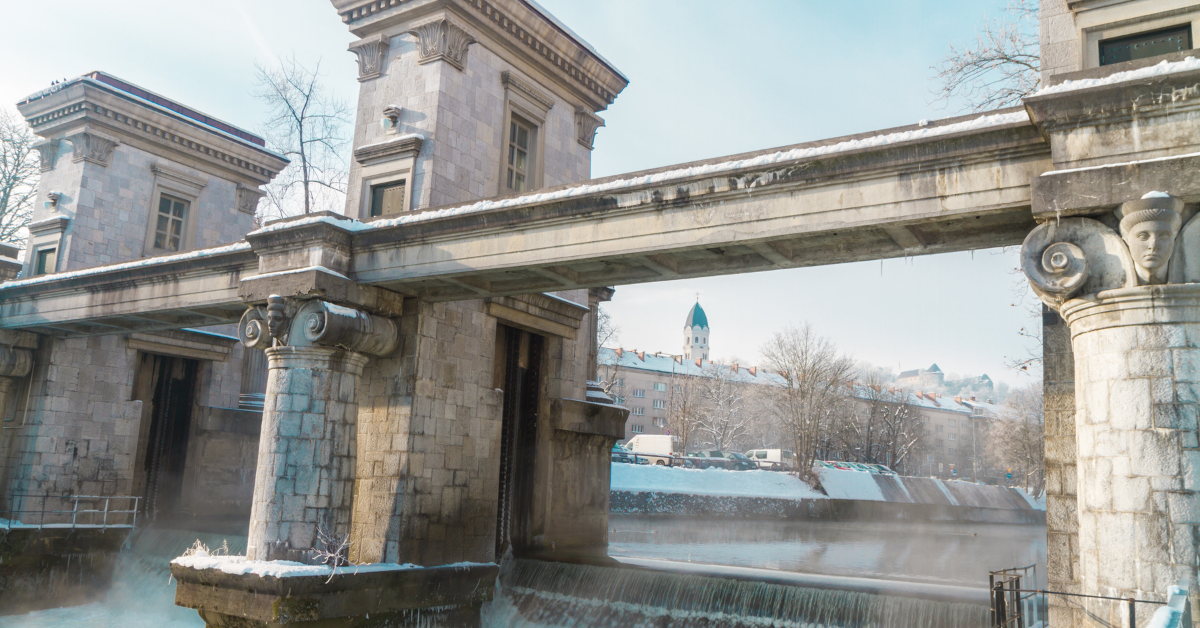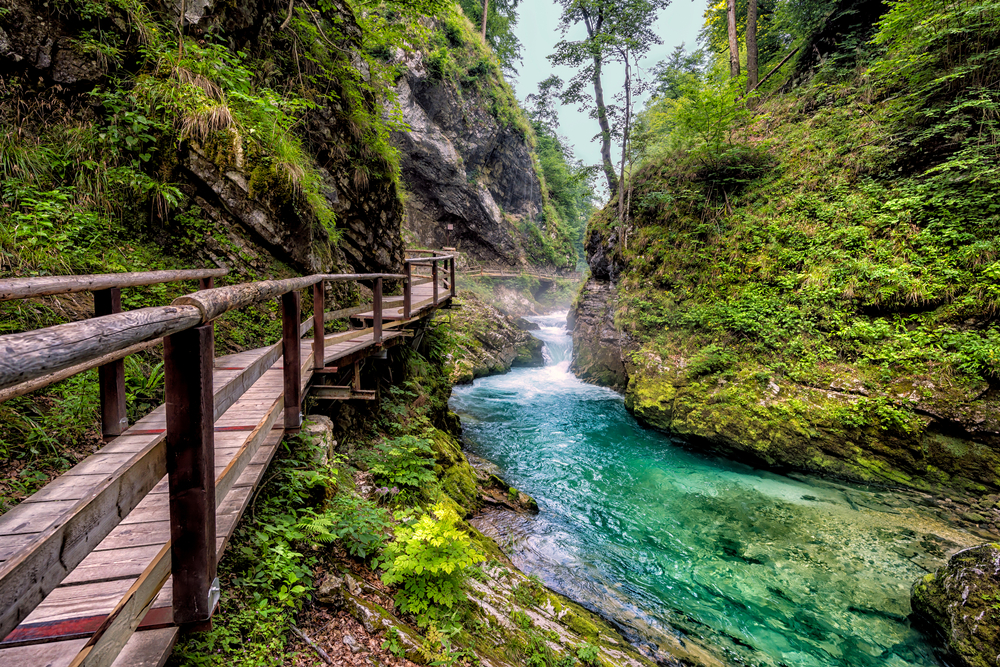I bet you don’t know that much about Slovenia. While it is right between Italy and Croatia, there is not much hype about this country. In other words, it hasn’t been overrun with tourists and probably should!
Slovenia has the gorgeous Lake Bled, the majestic Julian Alps, the Soca Valley’s stunning turquoise rivers, and the crystal clear waters of the Adriatic: there is much to do and see. Conde Nast Traveler names it a number one holiday destination for 2021.
Slovenia is slightly smaller than the state of New Jersey, making it an easy country to navigate. Visitors can easily stay in the capital Ljubljana and take day trips only 1-2 hours away to all the highlights.
Slovenia, the First Green Destination
In 2016, Slovenia was named the very first Certified Green destination in the world. Did you know there’s a grading system for green destinations? Slovenia earned an impressive 96%. There are 41 criteria, including air quality, water and waste, wildlife, and green businesses.
In 2021, Slovenia has nine locations included in the top 100 sustainable destinations list determined by Green Destinations for practices that protect the environment, reduce waste, and limit its population’s carbon footprint.
Sustainable Slovenia’s Food & Wine Experiences
From small organic wineries to world-lauded celebrity chefs, Slovenia’s sustainability practices in the fields and on the table taste amazing. Among other benefits, this means travelers can expect a robust farm-to-table tradition. Many delicious foods include plates of Carniolan sausage, strukelj dumplings, and potica cake.
Slovenia has always had an emphasis on sustainability; this is not a new trend. Farm to table dining has been the way Slovenes have always approached food.
2020 was the first year the Michelin Guide rated Slovenia’s restaurants with six stars, including sustainability awards.
Slovenia’s Organic Wineries
Slovenia has roughly 28,000 wineries and a winemaking tradition that dates back to pre-Roman times. With so many wineries, grapes are being ripened, harvested, sorted wherever you are in the country, and bottled nearby.
Close to the Italian border, the Primorska wine region is home to the Goriska Brda subregion, perhaps Slovenia’s best-known wine area. It’s a great place to try the region’s flagship white grape variety, rebula (also known by its Italian name, ribolla gialla). Many quality biodynamic and organic producers are located here, including Marjan Simcic, whose great-grandfather first began producing wine in 1860.
Today, the family’s vineyards – all hand-harvested and often picked late to ensure full flavor – extend across 44 acres of varied microclimates. Simcic uses only natural methods in vine cultivation. No artificial fertilizers or pesticides are allowed.
Moving across Slovenia to the Podravje region, travelers can try the country’s finest white rieslings, dry and sweet furmints, and bright, sparkling wines. Head to Suman Winery for a holistic approach to biodynamic winemaking. Here, local wildlife and farm animals have free rein to roam the vineyards, which helps build a healthier ecosystem.
In this rural setting, Suman winery produces wines such as a dry, unfiltered pinot noir, a rich, golden riesling, and a late-harvest orange wine (appropriately named “Sun Drops”).
Ljubljana, the capital of Slovenia (pronounced loo·blee·aa·nuh)
Slovenia’s capital city is lively and bustling with students, cyclists, and tourists looking for the perfect café along the river. Though home to nearly 300,000 people, Ljubljana possesses a small-town friendliness and an outdoorsy atmosphere that makes it highly livable. Ljubljana is famed for its historical heritage, tradition, and architecture. And it is a relatively young city with a modern lifestyle. The coffee and cafe culture is outstanding.
The city’s city center is car-free, making it easy to walk around. Keeping true to their Green mission, the city has 17 potable water fountains and even has an app to help you locate them! There is bicycle sharing and renting. Within the city center you can hop on an environmentally-friendly vehicle called a Kavalir (Gallant Helper) to get around.
The Legend Behind the Origins of Ljubljana
Founded by the mythological Greek hero Jason and the Argonauts, legend tells us they had stolen the Golden Fleece from King Aetes and fled across the Black Sea and the Danube, Sava, and Ljubljanica rivers.
At a large lake near the source of the Ljubljanica, they stopped and disassembled their ship to carry it to the Adriatic Sea, put it together again, and return to Greece. The lake was the dwelling place of a monster, which Jason fought, defeated, and killed. Now called the Ljubljana Dragon, the monster found its position atop the castle tower depicted on the Ljubljana coat of arms.
The earliest population of Ljubljana goes back 6,000 years. Emona, a Roman colony dating from 14 A.D., is considered the foundation for today’s city.
Medieval Ljubljana developed under the shelter of Castle Hill, spreading alongside the banks of the Ljubljanica River, which is the current Old Town today.
Plečnik’s Ljubljana
One can trace Ljubljana’s historical growth, Art Nouveau, and modern architecture. Architect Jože Plečnik (1872-1957), designer of unique architectural projects and landmarks, connected the Art Nouveau and modern architecture while redesigning urban Ljubljana.
The unique works of Plečnik left a lasting mark on three central European cities: Vienna, Prague, and Ljubljana.
In Vienna, where he studied under professor Otto Wagner, Plečnik designed many pioneering works of modern architecture. In Prague, he undertook, among other things, the renovation of Prague Castle for use as the presidential residence and the re-landscaping of the castle gardens.
Upon returning to Ljubljana in 1921, Plečnik accepted the post of professor at the newly established University of Ljubljana and focused on redesigning the city. At that time, Ljubljana was undergoing an infrastructural transformation, and Plečnik could start realizing his vision of a capital city. He tried to use modern approaches while modeling the city on ancient Athens.
With over a hundred bridges, buildings, streets, fountains, and statues he designed until the late 1950s, Plečnik made a more substantial impact on one single city than any other architect. Plečnik’s Ljubljana, a unique example of urban planning, is one of the 20th century’s most important total works of art.
Natural Wonders of Slovenia
Lake Bled: Lake Bled’s lush surroundings, emerald waters, and mountain backdrop feel like stepping into a postcard. Bled is an excellent destination for outdoor lovers, boasting scenic hiking trails and various water sports.
Postojna Caves: This caving system, discovered in the 17th century, was carved out by the Pivka River over millions of years. Today, the caverns stretch nearly 15 miles long! Guests who visit can learn the history of the caves by taking a mini-train tour or exploring on foot with the help of an audio guide.
Just down the road lies Predjama Castle, a unique structure built into the side of a 350-foot-high cliff. Hear the history of the robber baron who lived here and the intricate cave system beneath the castle.
There is so much to see in Slovenia, from castles, caves, spas, vineyards, rivers, and more. A great way to visit Slovenia is to combine it with Croatia. See my article on Croatia here.
Need help planning incredible experiences, like private winery visits, the best hiking and cycling, and fine dining? Let’s talk about how I can bring this experience to life for you! Click here to schedule your free consultation.
This article and photos are in cooperation with Virtuoso, Tourism Ljubljana and the Slovenian Tourism Board.





